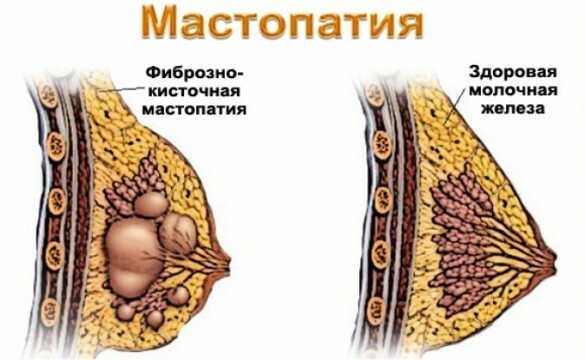Pancreatic cancer is a disease in which clinical signs often manifest themselves in the late stages, when the predictions are unfavorable and the struggle by rapid removal is already of little effect. The reason is that the tumor grows into adjacent tissues and gives multiple metastases, especially if the malignant transformation has affected the blood vessels. Disfigured malignant cells with blood flow can be delivered to other parts of the body.
Lifespan depending on localization of neoplasms

The oncogenesis of this disease has been little studied. However, a direct dependence of the appearance of the tumor on the presence of inflammatory processes in the pancreas and gall bladder was revealed. Patients with pancreaticulocystitis are in the immediate risk zone. Also to oncological factors is tobacco smoking: smokers who smoke more than a pack of cigarettes a day suffer from pancreatic cancer three times more often than non-smokers. Especially this applies to those who accompany smoking with the ingestion of food: it's no secret that many smokers like to "wash down" nicotine with sips of coffee.
Most often, pancreatic cancer is localized in the head of the organ, this is about 70% of diagnosed cases. The body of the pancreas is affected by cancer in 20% of patients, and the tail is least often - only one of ten cases.
The prognosis of a pancreatic oncological disease largely depends not only on the stage at which the disease was diagnosed, but also on what part of the pancreas is affected.
The head, body, tail are the components of the pancreas. More than half of cases of pancreatic cancer are diagnosed with localization in the head.
Operative treatment prescribed a very small proportion of patients with this diagnosis - no more than 5%.In this case, head tumor is observed in 90% of patients. Regarding symptoms with resectectal pancreatic cancer:
- jaundice - up to 90% of patients,
- jaundice and pain symptom - 25%,
- jaundice without pain symptom - 50%.
According to the most optimistic forecasts, such patients live no more than a year and a half.
With inoperable pancreatic cancer( almost half of patients, 46%), the average life expectancy after diagnosis is more than halved, to seven months. In general, the tumor is detected in the head of the gland, in eight cases out of ten. Symptoms:
- jaundice - in three quarters of patients,
- in 80% - strongly pronounced pain symptom,
- painless jaundice - 15% of patients.

If multiple metastases are diagnosed( which is almost half the patients), the entire pancreas is usually affected, all of its parts are the body, tail, head. Virtually all patients with this diagnosis have very severe pain syndrome, while:
- jaundice - in a third of patients,
- painless jaundice - only in one in twenty.
Live with such a diagnosis on average two and a half months.
What determines the predicted lifetime of
When specialists diagnose pancreatic cancer, the variability is taken into account such as:
- localization,
- value,
- extent,
- metastasis.
It is possible to fully determine at what stage the disease is located, and how much the patient will live, only after a complete clinical examination. And only after the diagnosis is made it is possible to determine the methods of treatment, as well as to make a prediction about the patient's life span.
With the diagnosis of "pancreatic cancer", the disease is classified mainly based on the possibility of removing the tumor in an operative way. Here we can distinguish the following categories of pancreatic cancer:
- operable,
- locally distributed,
- metastasizing.

Pancreatic cancer is a type of tumor that is localized in the anatomical and physiological limits of the organ, or does not metastasize into the blood vessels of large filling( veins and arteries) beyond its limits. The absence of metastases only pushes the date of diagnosis: at this stage, diagnosis is very difficult, and it is difficult to say how long the patient will live.
Pancreatic tumor in the operability stage is detected only in one out of ten patients.
Locally spread pancreatic cancer metastasizes only to nearby organs and tissues, affecting nearby large blood vessels( arteries and veins).In this case, it is not possible to diagnose metastasis distant, as well as removal of the tumor by surgical intervention. Pancreatic cancer at the stage of local prevalence is diagnosed in more than a third of patients with this disease.
Pancreatic cancer in the metastatic stage is diagnosed in more than half the patients. In this case, malignant tumors are found in the entire abdominal cavity and lymph nodes.
This classification is by far the best way to determine the curability or incurability of pancreatic cancer.
Symptoms of
The peculiarity of pancreatic cancer is that, at the time of manifestation of the symptoms, the disease is usually incurable, and palliative medicine alone can be applied. The palliative is aimed at relieving symptoms( mainly pain symptoms) and easing the remaining life span, no matter how many live.
Patients with pancreatic cancer exhibit the following symptoms:
- severe pain,
- a sharp significant weight loss.

In the absence of pain syndrome, weight loss and mechanical jaundice, pancreatic cancer can be treated surgically. This applies to cases where the tumor is located in the head of the pancreas, and because of the anatomical position it does not affect the bile ducts. This circumstance postpones the timely diagnosis of cancer. The absence of pain syndrome and significant weight loss, accompanied by mechanical jaundice, on the contrary, allows to identify the cancer of the gland at an earlier stage, when it is advisable to apply the surgical method of treatment.
This applies mainly to the cancer of the pancreas head, because with this tumor localization the tumor sprouts into the bile ducts, making it difficult for the gallbladder to function normally. If the cancer is localized in the body of the pancreas, the symptomatology is manifested late, the main symptom is a sharp severe pain that spreads to the entire back. Such pain is caused by a malignant lesion of the celiac plexus. If a patient seeks medical help at this stage, he is usually incurable, and life expectancy forecasts are extremely unfavorable.
Also, the tumor can spread to the duodenum, with the most pronounced symptoms - vomiting and nausea. This is caused by a disturbance of peristalsis due to metastasis of pancreatic cancer into the celiac plexus.
What determines the life expectancy of
Basically, the life span of a patient with pancreatic cancer "depends on the stage at which the disease was diagnosed. The localization of the malignant neoplasm( head, body, tail) also matters, but this can only prolong the life span a little. In doing so, make predictions and talk about the quality of life can only be in cases where the patient receives all the necessary medication.
Doctors-oncologists consider as an optimal option when a patient with pancreatic cancer in the last, fourth, stage is in a hospital - optimal is the hospice, where the patient receives the whole complex of necessary measures to reduce the pain syndrome, as well as care. Important psychological support in the last days of the patient's life: in the thermal stages near him there must be relatives and friends.
Pancreatic cancer is an oncological disease with unfavorable diagnostics, since it is very difficult to diagnose the disease at an early stage. More often neoplasms appear on a background of a pancreatitis - an inflammation of a pancreas. Therefore, you need to give maximum attention to the treatment of this disease. When diagnosed with pancreatic cancer, the main treatment is palliative therapy.



